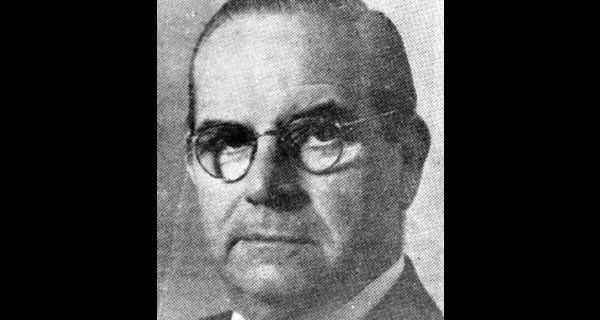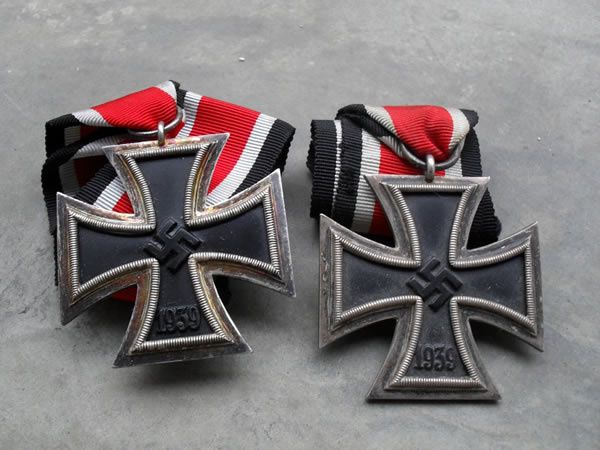Franz Augsberger was the son of a hotel owner in Vienna, then the capital of the Austro-Hungarian Empire. After primary school he attended a military preparatory school for one year. However, following the collapse of the Austro-Hungarian Empire after World War I, Augsberger went on to study and graduate in engineering and architecture. In July 1927, Franz Augsberger joined the Steirischer Heimatschutz, an antisemitic and antirepublican organisation. Yet Augsberger found this organisation too disorganised and left it in October 1930. Instead, he quickly joined the Sturmabteilung (SA) on 30 October 1930. The same day he also became a member of the NSDAP.
Until 1932 Augsberger worked as an architect in Vienna. During this period he took an engineering job in Norway for one-and-a-half years, where he learned Norwegian. In Vienna, he began to get more involved in the activities of the NSDAP. He was in charge of propaganda until 19 June 1933, when the NSDAP was declared illegal in Austria. Franz Augsberger then moved to Germany and after having joined the SS in 1932, became a probationary candidate until February 1934 when he was awarded the rank of SS-Mann (Private). Franz Augsberger served with the Austrian Legion from April 1932 to October 1933 when he left the Legion's base at Lechfeld, South of Augsburg, and transferred to a training area near Dachau, and was subsequently promoted to SS-Unterscharführer (Junior Squad Leader) on 20 April 1934, and to SS-Oberscharführer (Senior Squad Leader) on 1 June 1934.
On 1 October 1934 Franz Augsberger joined the SS combat support forces (SS-Verfügungstruppe), and became a platoon leader until March 18, 1935. He was then recommended to attend the first class at SS-Führerschule “Braunschweig”, (Officer candidate school) where he began classes in April 1935. He was also given the rank of SS-Hauptscharführer (Head Squad Leader) on 1 April 1935. After passing the final exams, he was again promoted to the rank of SS-Standartenoberjunker(Officer Candidate) in January 1936. After having been promoted to the rank of SS-Obersturmführer (Senior Assault (Storm) Leader) in 1936 and SS-Hauptsturmführer (Captain) in 1937 and having received additional training at the Rasse und Siedlungshauptamt he returned to the school in Braunschweig, where he became an instructor, teaching weapons courses, followed by a year of teaching at the SS officer school in Bad Tölz until March 1939.
At the beginning of March 1939 Franz Augsberger was moved to the SS-Standarte “Der Führer” where he remained until the beginning of August that year. Franz Augsberger belonged to a selection of candidates who might potentially become SS adjutant to the Reichsprotektor of Bohemia and Moravia, former Foreign Minister Konstantin von Neurath. He was also temporarily reassigned to an Allgemeine-SS command in Villach with the rank of Allgemeine-SS Sturmbannführer on 1 August 1939. He was returned very soon to his still permanent regiment “Der Führer” assignment, where his Allgemeine-SS rank was changed to SS-Hauptsturmführer on 21 March 1940, which would correspond to his Waffen-SS rank.
On 1 October 1940 Franz Augsberger transferred as a company commander from the SS-Standarte "Der Führer" replacement unit to the SS-Standarte “Westland”, an SS-regiment consisting of volunteers from the Netherlands and Belgium only to transfer to the SS-Standarte “Nordland”, composed of volunteers from Norway and Denmark, in December 1940. He was in charge of this regiment until February 1941. Effective on 10 February 1941, Franz Augsberger was given command of a battalion of the SS-Standarte 7, which had just been reorganised into a motorised infantry regiment the month before. Augsberger continued as its commander until the beginning of December 1941, when, on 1 December 1941, he was promoted to SS-Sturmbannführer (Major).
As an SS-Sturmbannführer he now led the entire SS-Standarte 7. Until July 1942 as a part of SS-Division *Nord”. With this regiment Augsberger stood out amongst the other SS leaders, and his SS-Brigadeführer Karl-Maria Demelhuber recommended him for promotion to SS-Obersturmbannführer(Lieutenant Colonel). With the SS-Standarte 7 Franz Augsberger won the Iron Cross II class on 4 July 1941, and the Iron Cross I class on 15 September 1941, as well as the Infantry Assault Badge on 15 January 1942. On April 20, 1942 he was promoted to SS-Obersturmbannführer with seniority retroactive to start of the same month. Augsberger also won the German Cross in Gold on 30 May 1942 for his battalion and regiment commands with the SS-Standarte 7.
In August 1942 Adolf Hitler ordered the raising of an SS-unit composed of volunteers from Estonia. First named Estonian Legion, it was renamed 3 Estonian SS Volunteer Brigade in September 1942. In October 1942 Franz Augsberger became commanding officer of the brigade and was subsequently, in July 1943, promoted to SS-Standartenführer (Colonel). In January 1944 the brigade was enlarged to form the 20. Estnische SS-Freiwilligen-Division and in May 1944 the 20th Waffen Grenadier Division of the SS (1st Estonian) respectively with Franz Augsberger remaining in his function as commanding officer, being promoted to SS-Oberführer (Senior Colonel) in January and to SS-Brigadeführer (Brigadier General) in June 1944. Augsberger was mentioned in the daily Wehrmachtbericht on 9 March 1944.
Even though initially distrusted by his Estonian subordinates, Augsburger eventually gained their trust and respect by often leading them from the front. Franz Augsberger stayed in command of the division during the long retreat of the German forces on the Eastern Front. On 19 March, Franz Augsberger was killed in action near Neustadt during an attempt to break out of the city of Oppeln in Upper Silesia, a city that had been declared a fortress and had been completely encircled by Soviet forces. Eleven days previously he had been awarded the Knight's Cross of the Iron Cross by Generalfeldmarschall Ferdinand Schörner for the division's role in the battle to defend Oppeln.
























